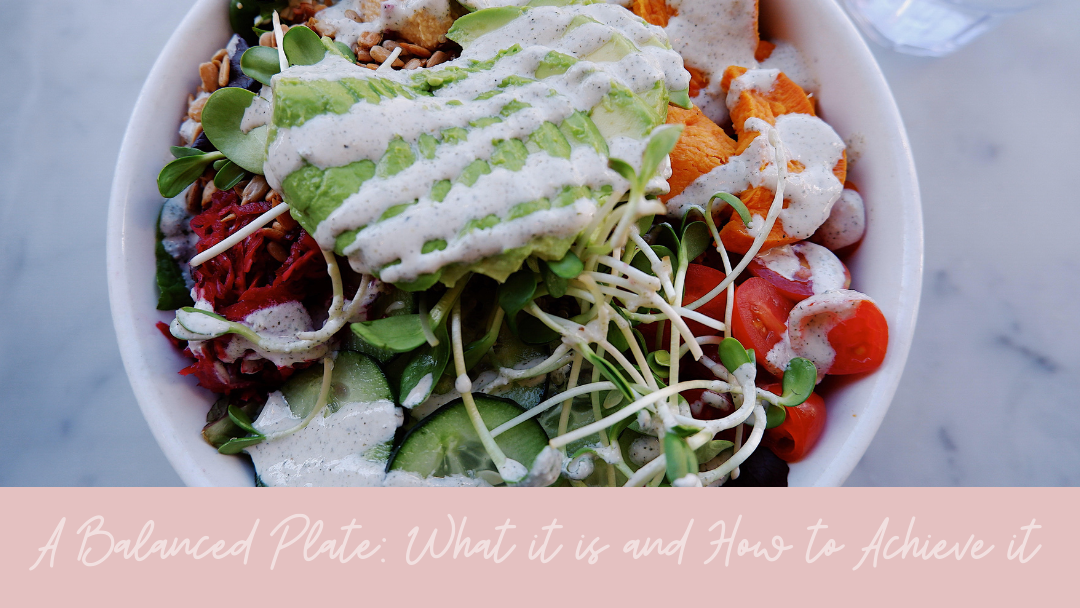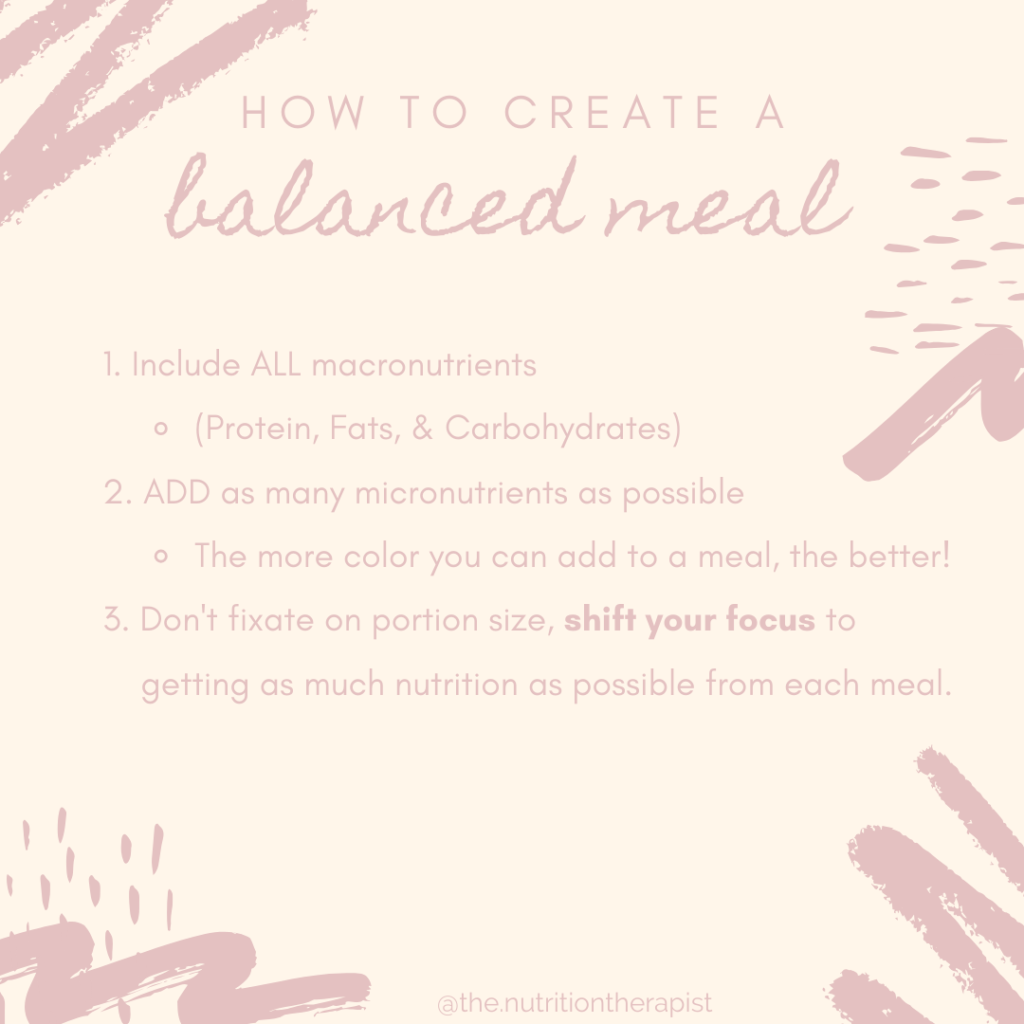How to Create a Nutritionally Dense Meal
When working with clients, my goal is to help them break away from the idea of designing meals around what they think will help them manage their weight. Planning meals around the fear of gaining weight is unhealthy and unsustainable for long-term health.
One goal is to make a shift in the way we look at food and begin using nutriton as a form of self-care. Remember- we are supposed to enjoy what we eat too! The nutrients we eat enable us to fuel our bodies throughout the day and our lives.
When planning a meal, think balance. An easy way to view this is the rule of three: protein, carbohydrate, and fat. Protein is the most filling out of the three, so ensuring you have adequate amount of protein is essential for satiety. Adding healthy fats is also essential to give your body energy, support cell growth, promote normal brain function, and regulate your hormones. Carbohydrates are your body’s main source of energy and are an essential macronutrient to include in each meal. Carbohydrates are also where you will get most of your fiber intake which will aid in digestion.
Here are some examples of options to chose from in each category of macronutrient:
-
- Nutritionally Dense Proteins: fish, eggs, beans, tofu, tempeh, lentils, chickpeas, spinach, kale, nuts, nut butter, & seeds.
- Nutritionally Dense Fats: avocado, hummus, olive or coconut oil, nuts, & nut butter.
- Nutritionally Dense Carbohydrates: any fruit or veggie, sweet potatoes, quinoa, rice, oats, pasta, & bread.
A good rule of thumb for making nutritionally dense meals, is adding as much color as possible to them. The more different colors you see in a meal, the more vitamins, minerals, antioxidants, and micronutrients there will be.
Tips:
-
- Don’t worry about portion size – eat whatever amount feels right for your body at that moment.
- The more spices the better! Adding spices to your meals boosts both nutrition and feelings of satiety.
Having balanced meals with a good ratio of all macronutrients (protein, fat, & carbohydrates) and as many micronutrients as possible (through fruit & vegetables) is key to promoting feelings of satiety in the brain and leave you less likely to want more food after or later in the day. A simple rice and beans dish becomes so much more nutritious and satisfying if you add a healthy fat like avocado or guacamole, plenty of fresh vegetables such as tomato, peppers, onions, and spices like garlic and fresh cilantro.
If you need help healing your relationship with food, contact me so we can work together to implement gentle nutrition into your life.









